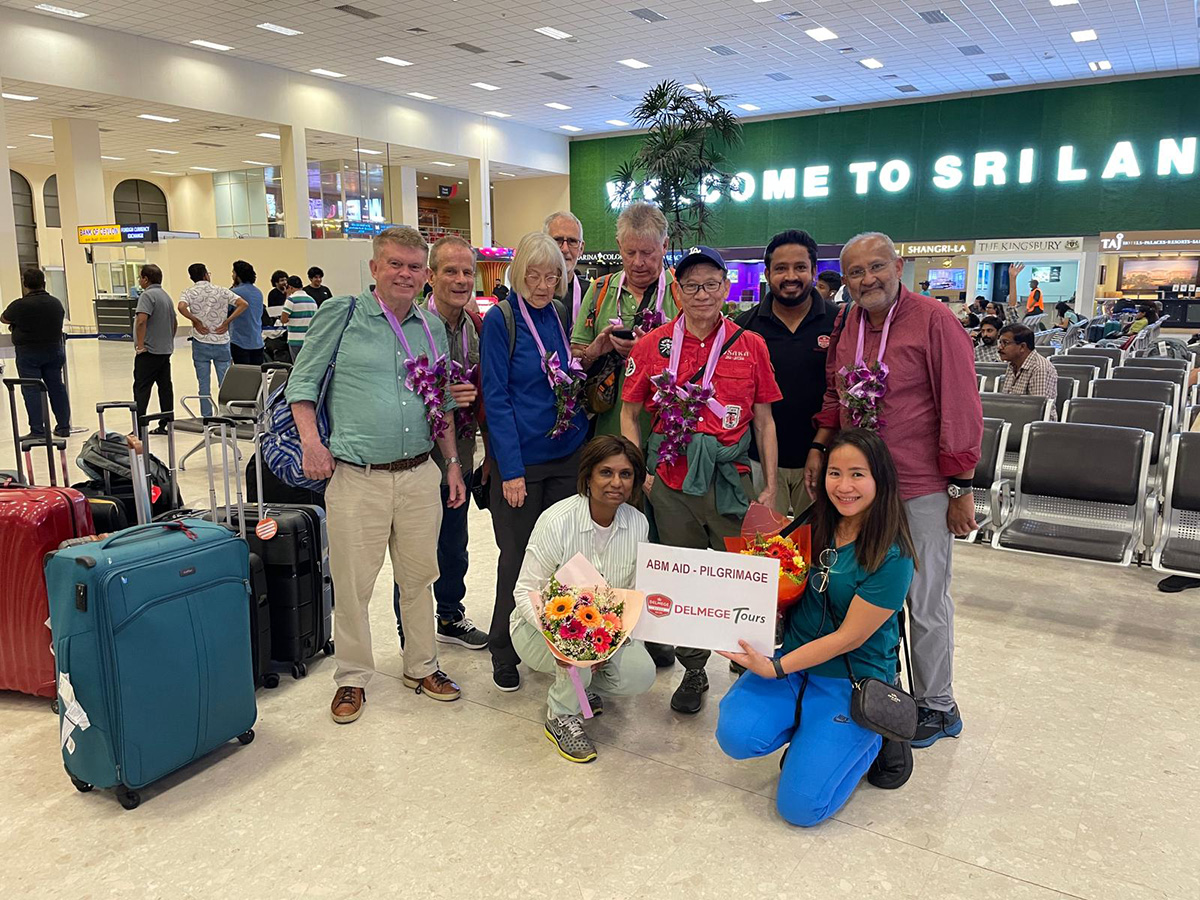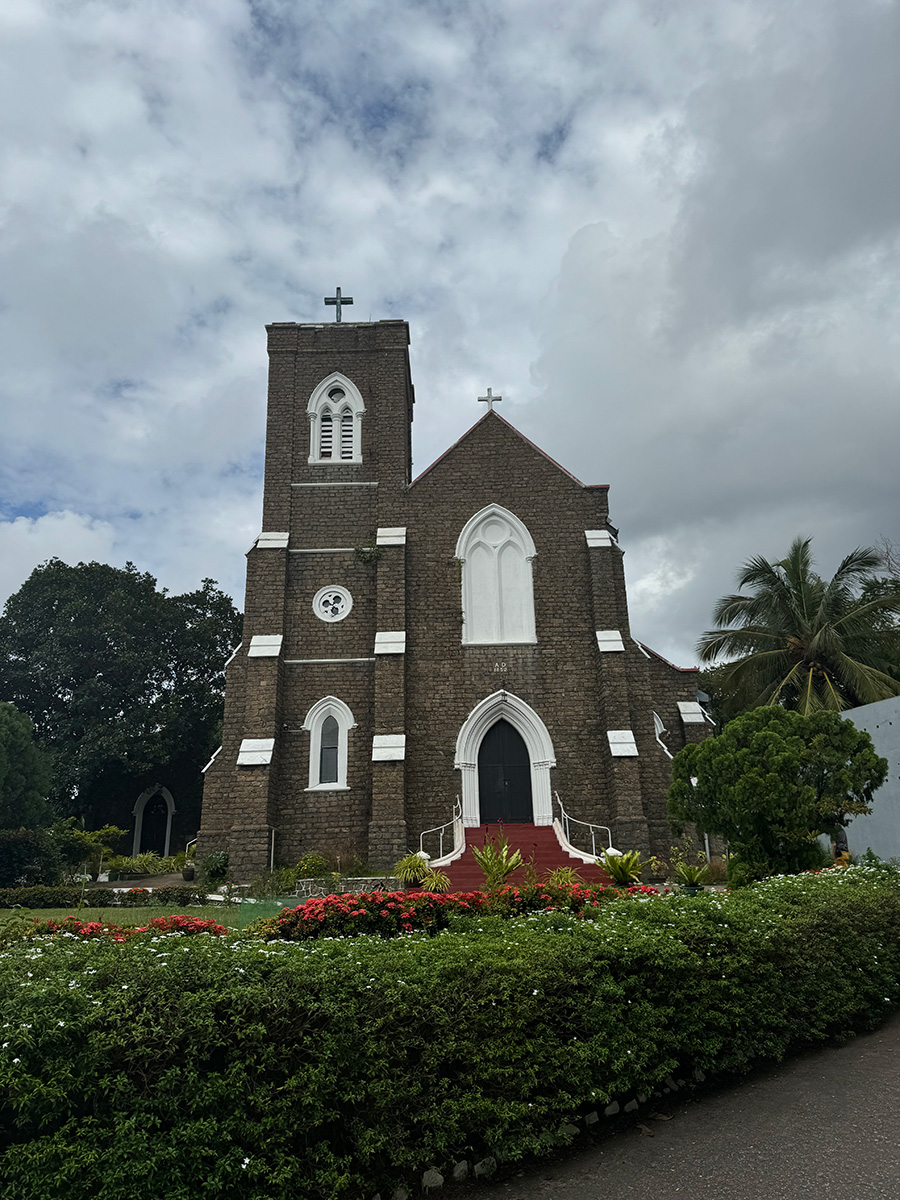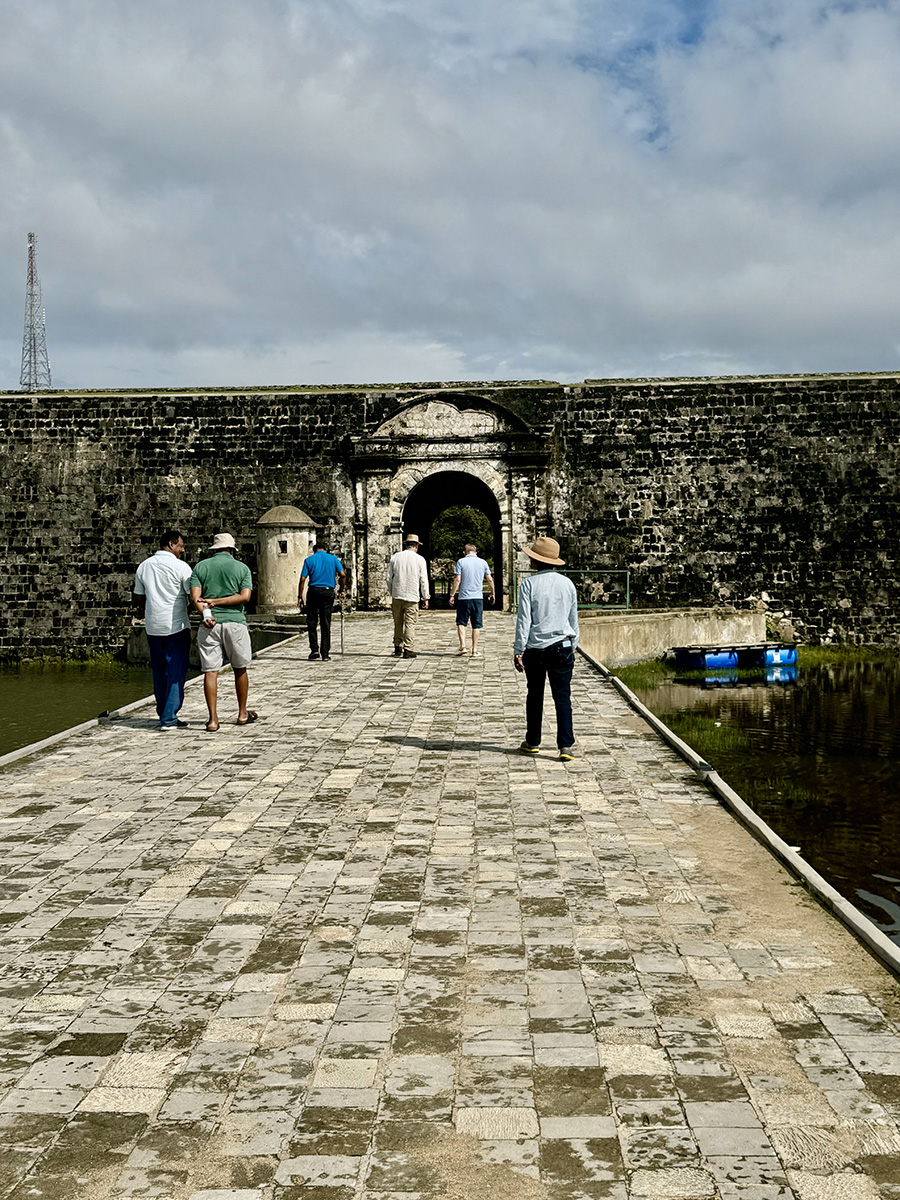ABM Pilgrims in Sri Lanka
ABM PILGRIMS IN SRI LANKA 18-30 OCTOBER 2024
During October, nine people flew from Sydney to Colombo in Sri Lanka to begin a transforming ABM pilgrimage to visit the people and country of ABM AID’s newest partner, the Anglican Church of Ceylon. Here is an (edited) story of the journey, written by one of the pilgrims, Mr Christopher Godfrey.
Day 0 – the group meets up at Colombo
The pilgrims: Fr John Deane, Kumar Rasiah, Lyn Bannerman, Colin Bannerman, Tony Naake, Paul Lee, Christopher Godfrey, Simolyn Delgado, Krishnee Nair, Tony Senewiratne.
Flying in the direction of Colombo from Sydney the initial meet-up happened in Singapore as different connecting flights from Sydney taken. John met us at Colombo Airport.
At the airport, our terrific Delmege guides (Driver Mr Madu and his assistant Mr Ananda) were on hand to smooth our transition to the minibus and equatorial climate and the world of Tuk Tuk traffic.
Check out the nice picture of us all apart from Tony Senewiratne with our Sri Lankan flower lei necklaces.

Pilgrims arrive at Colombo Airport.
A question: Were we real pilgrims? We certainly did not conform to the stereotypical image of austere and (miserable?) religious types in constant prayer. More like the fun and naughty pilgrims of Canterbury Tales. Fr John managed to oversee the right balance of Christian worship, education and culinary exploration. Thanks, John!
Day 1 – 18 October — Marino Beach Hotel
Here we met up with Tony Senewiratne who accompanied us for the rest of the trip and, with Kumar, acted as local expert. He had special knowledge of his own organisation’s aid project throughout the country.
The hotel was modern and on the beachside. Clean and well run. It was great to experience a decent hotel and the food. This was the beginning of my own personal food battle. How to limit intake with such an array of both Sri Lankan and European dishes. We all had our introduction to the local breakfast mainstay – the Sri Lankan Egg Hopper.
Kumar was an enthusiastic coach for all of us – “try this” and “try that”.
Outside the climate was very hot and humid and from the rooftop horizon pool, the swimmers could look out over the sprawling equatorial city and Indian Ocean.
On the street the traffic was crazy, and life was a bit intimidating for someone like me with little experience of developing country travel.
We spent 2 nights here and from then on it was a new hotel and place every day. Kumar driving us with endless enthusiasm.
We visited The Rt Rev’d Dushantha Rodrigo, Bishop of Colombo for a very interesting evening and attended a service in the Cathedral.

Service in the Cathedral of Christ the Living Saviour, Colombo.

Pilgrims sitting around the table.
Also, the Roman Catholic cathedral, a fascinating Buddhist temple and the historical Anglican Church.

St Anthony’s Catholic Church.

Buddhist Temple.

Christ Church Mutwal was the first Anglican Cathedral in Sri Lanka.
We also saw Tony’s medical/dental centre and could spend time with the doctor and dentist. Interesting details of funding and practicalities of aid were covered by Tony.

Health Centre.
After our first night, it was busy busy and go go trying to keep up with Kumar’s enthusiasm. This was when I developed my morose pattern of thinking “Please Kumar No More Temples – only to be followed by “That Was Great Kumar – Glad I Didn’t Miss Out!”
Days 2 -3 – 19 – 20 October — Marino Beach, Drive to Jaffna.
A very early start saw us on the bus and heading north to Jaffna. The plan was to make the long drive and take a more leisurely drive back south.
On the way, we dropped in at the Elephant Orphanage. A nice example of wildlife and eco-tourism. The elephants were interesting and the guides knowledgeable. It was interesting to see how limited the resources and infrastructure are compared to wealthy countries. An equivalent venue in Europe or Australia would have sophisticated merchandising, cafes and audiovisual displays. Some sort of economic lesson there. Even if the essential attraction – the animals – are the same. I didn’t miss the merchandise by the way.

Pilgrims with elephant.
Closer to Jaffna we visited the Vavuniya Diocesan Peace Centre. This is a project funded by ABM AID and in the area affected by the civil war. It was for me my first contact with people in the frontline of conflict and reconciliation.

Pilgrims hearing the story of Oppuravillam.
The young psychologist working at the centre was an example of how “developed” country mental health skills could be applied in a developing and war-traumatised culture.

Pilgrims hear from the Opporavillam Centre’s psychologist.
Around this time, we could see from our air conditioned bus the classical Sri Lankan terrain of flat paddy fields, abundant water and palm or coconut trees. As we moved north the country became flatter and dryer.
Every time I exited the bus the heat and humidity hit like a wave. It was then I thought that next time I would have to acclimatise in some way to really get the most out of this sort of trip.
Near Jaffna, we stopped at the Sangupiddy Bridge. Adjacent to Jaffna is a maze of shallow waterways which lead to the ocean. Kumar could describe in detail how the civil war was fought out on these stretches between Tamil insurgents and the Sri Lankan army or navy. The Tamil Tigers seem to have had quite sophisticated fighting methods in this area.
We arrived at Jetwing Jaffna Hotel later in the evening.
Day 4 – 21 October – Jaffna
Jaffna Hotel was in an interesting and busy part of town but we arrived late and left first thing in the morning. Before heading south, we visited Jaffna Fort, originally built by the Portuguese and later the Dutch. We could hear about the European history of the fort.

Pilgrims at Jaffna Fort.
The fort was also a site of an important battle in the civil war, and it was here that our guide Mr Ananda was wounded in the civil war when serving in the Sri Lankan army. We stood among the fort walls looking over ground that was right in the centre of artillery barrages and destruction. All very quiet now but a sobering thought.

Pilgrims at Jaffna Fort.
Going south towards Trincomalee we drove through more typical north Sri Lankan country. Drier than the south and flat. Some interesting wildlife, roadside cattle, and elephant fences were seen from the bus.
We passed through Civil War battle sites and memorials. One beach area looked very pleasant but nearby had been a massive slaughter at the end of the war.
The memorials all celebrated the Army/ Sinhalese troops and not the Tamil Tigers.
Days 5-7 – 22 – 24 October- Trincomalee, Polonnaruwa, Kandy,
Day 8 – 25 October – Kandy, Kurunegala and school visit
Our agenda included a visit to the Bishop of the Kurunegala Diocese, The Rt Rev’d Nishantha Fernando and a potential ABM AID site in the diocese.
With the bishop as a guide, we visited a possible Anglican school project and farm which surprisingly for me – aimed to produce organically farmed chili for the Japanese market.

Pilgrims shown over the school building site.
We had backtracked to visit Kurunegala and so returned up the winding road to Kandy.
Our aim was to drive to the higher hill country and tea plantation area but on the way, we stopped to visit a very inspiring Anglican school – Mowbray College.

Mowbray College is an Anglican School.
We could view the student art display and buy some student paintings. The impressive headmistress – Manoranjani Kingsly – spoke to us about the students from the Tamil tea plantation worker families. This was quite confronting and the dynamic and confident young women pupils who showed us around were evidence that good work has good outcomes. The girls were as confident and articulate as our young Australians living in a much richer country. This visit was one of my most memorable events of the trip and one in which I of course showed some “P.K.N.M. Ts” signs again and again, and enjoyed every moment. (Apologies, brother Kumar.)
Heading off late to the higher plantation area we wound through increasingly mountainous terrain. There was rain and an increasingly cooler climate which I found refreshing indeed.
Days 9-12 – 26 – 28 October — Nuwara Eliya to Ella by train, Yala National Park, Galle
Day 13 – 29 October – Galle to Colombo and airport.
I was over the heat by now and ready to go home but a real treat was still to come. Despite my usual feeling of P.K.N.M. Ts. We visited Kumar’s old school in Columbo.
It was interesting to see the very “western” school with its good facilities and nice buildings. The young students looked and moved like private school boys in Sydney. It was an example of how complex societies in so-called undeveloped countries are.
The famous chapel was very nice.

School chapel.
After this visit, we headed to the airport. On the way to the school, we dropped Tony Senewiratne near his home so we lost our other local expert. Thank you Tony for all your expert advice and answers to stupid questions from me!
Once in the airport, we all switched to “flight mode”. Everyone apart from John was on the same flight. Kumar stopped in Singapore. The rest of us went on to Sydney on the dreaded long-leg flight.
I declared my visit to a farm site and the border force people efficiently sprayed my boots. I was not to go to any farms back in Australia but the process was smooth and efficient. (A big tick for Aussie quarantine process)
So to end – we returned “tired but happy” from our journey.
My highlights were the high country, the train trip, the Buddha statues at Polonnaruwa and the school visits to Mowbray College and Tony’s school.
I needed 4 days to get over jet lag, a non-stop trip and some “curry signs”.
A huge thank you firstly to John Deane who allowed us (like modern Canterbury Pilgrims) to self-regulate our religious activities, have fun and enjoy the super abundant food.
Secondly to Kumar Rasiah who was a tireless promotor and facilitator. His running dialogue with the guides from the back of the bus was hilarious. His local knowledge of sites, cricket venues and politics was invaluable.
Finally to Simolyn Delgado from the ABM who discretely did the administrative work, management of cash fund, organising hotels and herding us along.
C.G.